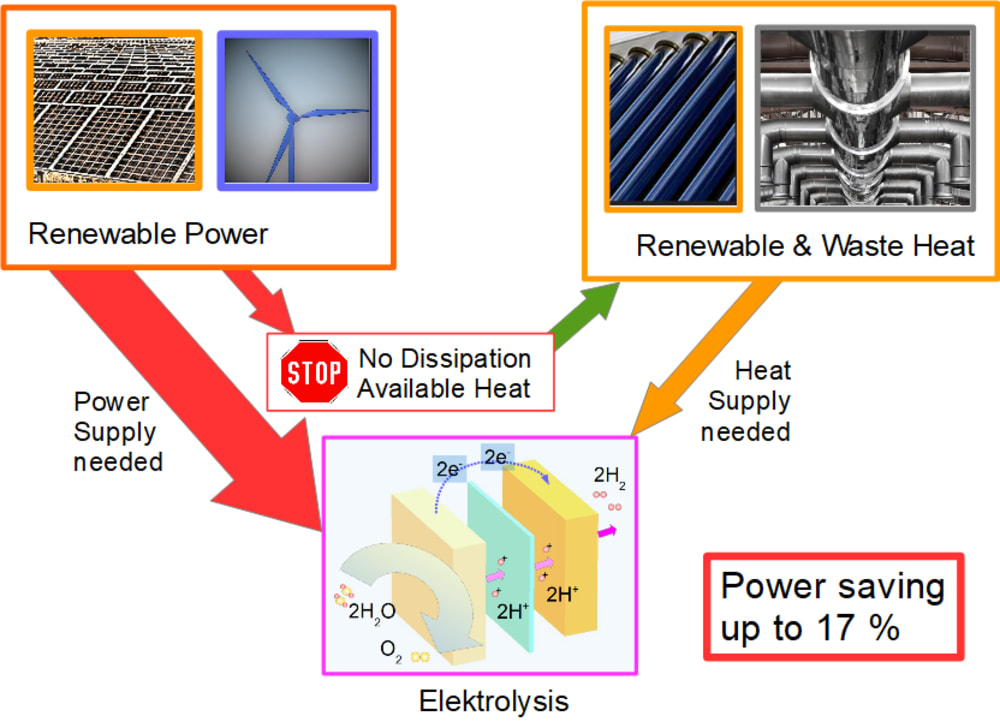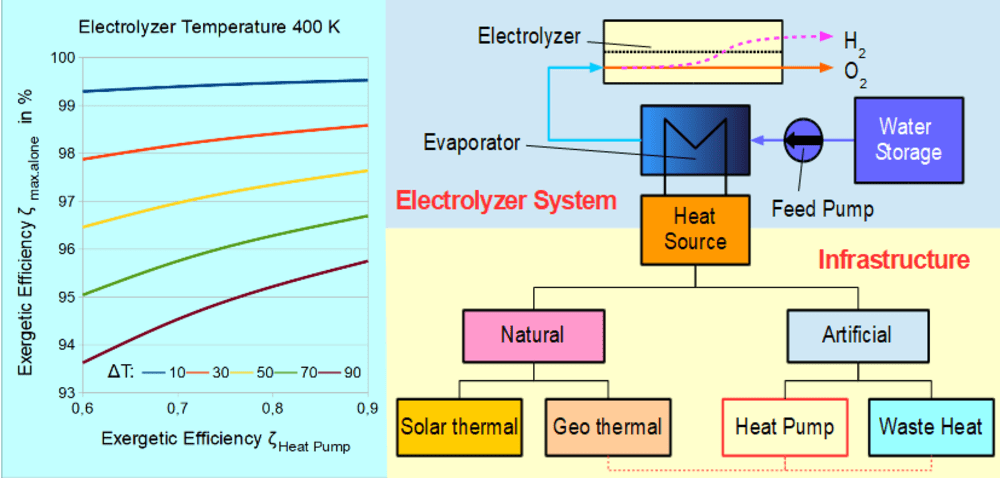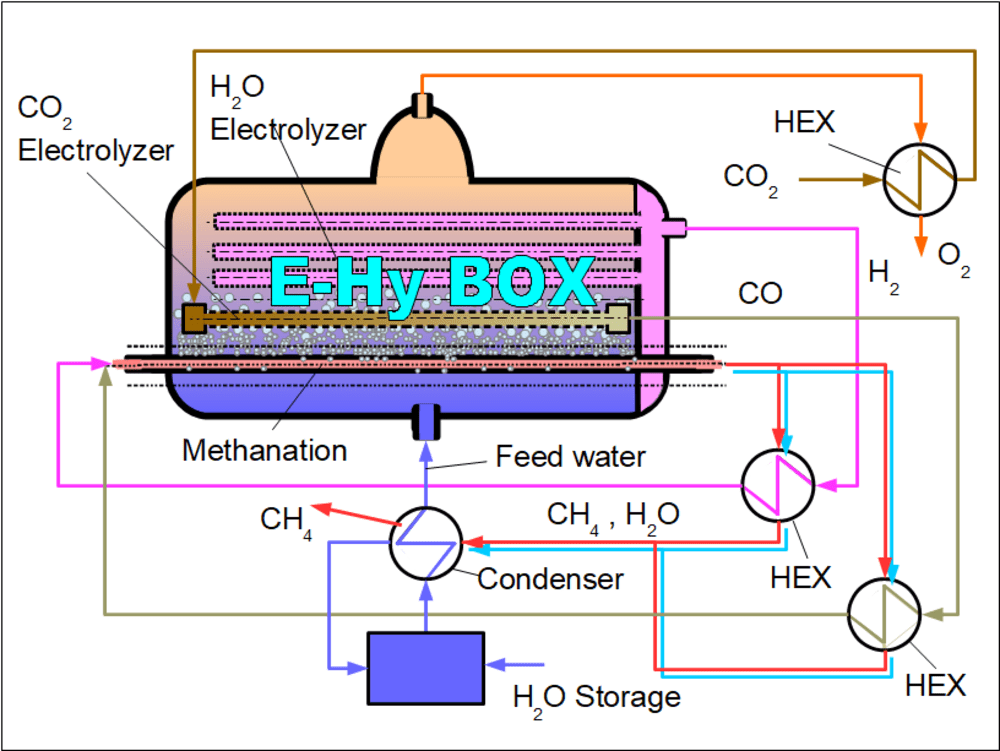The transition to a sustainable energy supply requires efficient, cost-effective and environmentally friendly storage technologies. Water electrolysis and the associated power-to-gas technology for regenerative hydrocarbon generation principally meet these requirements, but have conversion efficiencies that are poor compared to batteries. Efficiency improvements are therefore urgently needed to take full advantage of the existing natural gas infrastructure with huge gas storage facilities. A fundamental thermodynamic analysis of the fundamental process structures by own reversible process models identified the following loss sources:
- Dissipation of electric current to cover the vaporization heat of the entering water.
- Additional hydrogen generation for oxygen separation during methanation.
- Dissipation of the electricity generation potential of thermal methanation.
- Faulty system integration.
Leading to the following improvements. Starting point is controlling the energy flows in electrolyzers following the thermodynamics of the reaction and thus covering the heat demand by waste heat management instead of electric power. The electricity savings potential is 17%. Thus theoretically, 100% of the electric work can be stored as thermodynamic potential. Therefore practically occurring losses are only due to the technical implementation (e.g. temperature differences, pressure losses etc.). The application of these findings leads to the following innovative designs summarized as E-Hy BOX and its associated processes.
- Steam generator integrated electrolyzer system E-Hy BOX
In terms of geometry and design, the steam generator is deliberately based on proven shell boilers or steam accumulators in order to minimize the development risk of the electrolyzer periphery. Periphery is frequently underestimated in many innovations. Geometrically, the stack arrangement corresponds to the smoke tubes of shell boilers and the external heat sources to flame tubes. Using heat pumps allows even supply with low-grade heat. - Hydrogen-based electricity storage system E-Hy BOX
The combination of E-Hy BOX with gas vessels and a fuel cell with integrated heat storage enables efficient electricity storage for different applications. - E-Hy BOX with integrated methanation and other exothermic processes
The flexibility of the E-Hy BOX design allows the water electrolysis to be directly supplied with the waste heat from integrated methanation or other exothermic reactions if necessary with any integration in associated heat management systems. - Fuel cell injector for efficiency improvement of thermal methanation processes
The hitherto unused power generation potential can be utilized by a hydrogen fuel cell injector in the methanation reactor. - Development of electrochemical methanation for process improvement
3 new detected thermodynamically possible electrochemical methanation reactions can remove the unwanted oxygen produced during methanation by oxygen ion conducting electrolytes avoiding extra hydrogen demand. - Integration of E-Hy BOX systems into closed carbon cycles (CCC).
The E-Hy BOX concept represents a key technology for the establishment of closed carbon cycles enabling regenerative hydrocarbon production as an industrial feedstock by using the waste product CO2.
Expected hydrogen production with efficiencies above 90% and power generation efficiencies of 80% with SOFC-GT (demonstrated by our own design studies 1994/2000) can increase the system efficiency of electricity storage to values between 70 to 80%.
Like this entry?
-
About the Entrant
- Name:Wolfgang Dr Winkler
- Type of entry:individual
- Software used for this entry:Own developed
- Patent status:pending








